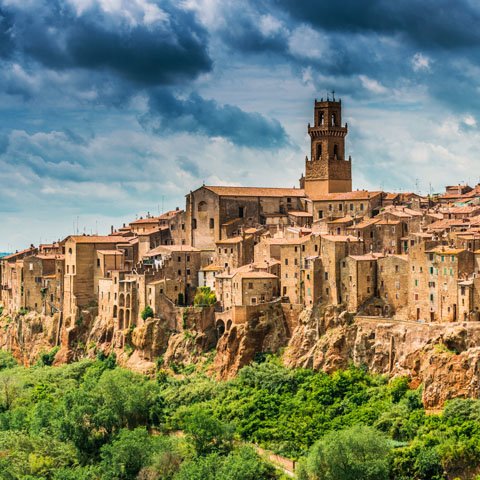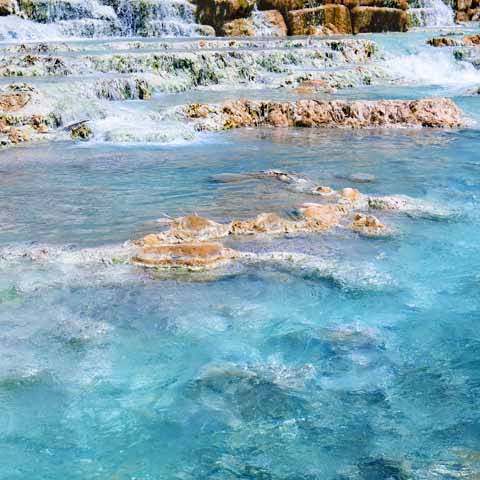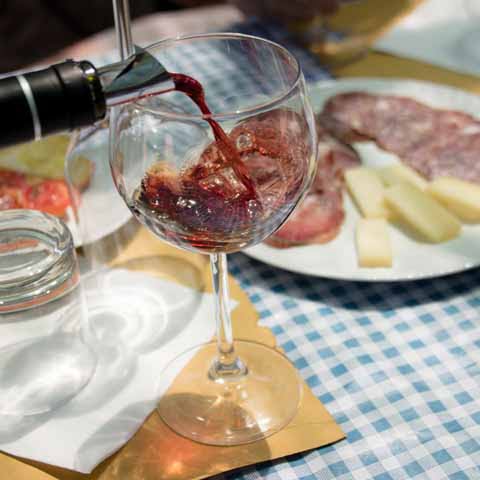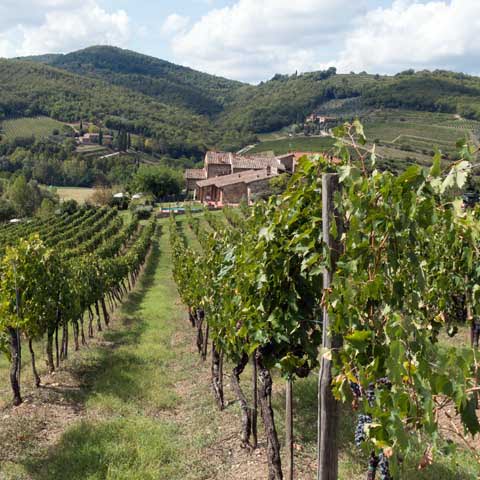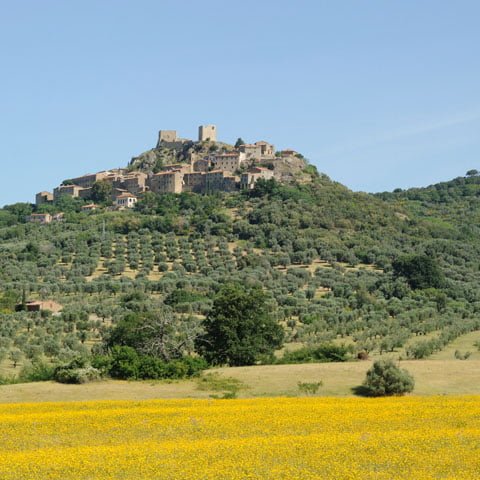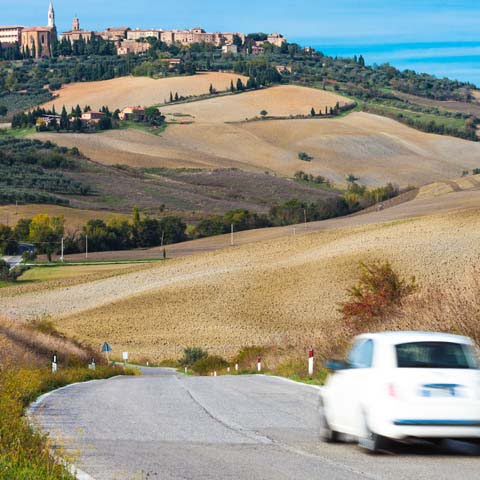Located at the southern end of the region of Tuscany and spanning both the Grosseto and the southern tip of the Livorno provinces lies the charming and rustic area of Italy known as Maremma. There are many towns and villages to be found scattered throughout Maremma and plenty of things for visitors to see and do there.
The history of Maremma is a long and turbulent one. While in ancient times it was one of the most fertile and wealthy regions on the Italian peninsula, the rise of Rome would eventually lead to the land being overly exploited of its natural resources. After centuries of being mined to excess, with farms draining the soil of its nutrients and civilization changing the local geography, the area ended up degenerating into a swampland that was quickly infested by malarial mosquitoes. For centuries, Maremma was known as the roughest and most inhospitable place in all of Italy, and it was even featured in Dante’s Divine Comedy as the location to the entrance to hell.
Over the years, the people of Maremma, known as the Maremmani, were seen as particularly poor, rustic, and weathered. Only a small number of people inhabited the region during the centuries that it remained a swamp. And despite the inhospitable nature of the region, they continued to be exploited by both foreign and local entities. The Spanish, for example, took control of the region for three centuries, draining the people and the land of what little resources remained.
It was only in the nineteenth century that Maremma’s status took a turn for the better. The area was united under Grand Duke Leopold II, who used then-revolutionary hydraulic engineering technology to drain the swamp and return the area to its fertile, arable state.
Centuries of being left to their own devices at the best of times and exploited at the worst of times has created a very unique cultural identity in Maremma. The Maremmani are fiercely independent, tend to generally keep to themselves, are quite protective of their freedoms and their cultural roots, and are proud of their rustic, countryside heritage. Many of the Maremmani scoff at the idea of even living in the capital of the area, Grosseto, preferring to live out in their smaller villages in the countryside. This is despite the fact that, compared to more major travel destinations such as Florence or Rome, Grosseto is actually quite small.
Due to its remote and unassuming nature, Maremma is not a destination usually included on most travel itineraries. However, visitors to the region can expect to find some of the most delightful hidden gems that Italy has to offer. The Maremma area features a very rustic zone with wide open plains and hills full of trails for hiking and biking and sweeping landscapes of prairies and wildflowers. Just as interestingly, the plains are dotted with old ruins from the Etruscan, Roman, and Medieval eras that are open for public visitation.
Perhaps the biggest draws to the Maremma region, however, are its beaches. Maremma hosts some of Tuscany’s most beautiful and remote beaches along its coastline. Despite the relative remoteness of the area, resort towns have sprung up along the shore, promoting lush beaches to weary tourists who want to stop and relax for a while.
Meanwhile, the hills of Maremma are dotted with natural hot springs. The most revered of these are the Thermal Baths at Saturnia. This travel destination is perhaps the most well-known attraction that Maremma has to offer, and is beloved by both travelers and locals. The thermal baths are infused with minerals and heated by naturally-occurring geothermal activity beneath the surface of the earth.
GEOGRAPHY & CLIMATE
Due to its sparse population, much of the landscape of Maremma remains unindustrialized and unspoiled. The countryside features a varied mix of plains and hills, and the land is lush with grasslands, wildflower prairies, and forests. Maremma borders the Tyrrhenian Sea, and the coastline varies between rocky outcroppings and sandy beaches.
Maremma has a typical Mediterranean climate, with hot and dry summers that are somewhat mitigated by the sea breezes. Winters are mild and humid, and the rainiest months tend to be October and November.
WHEN IN MAREMMA
Visitors to Maremma will have no shortage of outdoor activities to engage in. The hills and plains are crisscrossed with trails for biking, hiking, and horseback riding. Closer to the sea, many of the resorts that line the coast also offer fun activities in the water, such as kitesurfing, waterskiing, windsurfing, and fishing.
Maremma also hosts a number of historic ruins scattered throughout the countryside. Some of the more famous ruins are found at the ancient city of Roselle just outside the capital city of Grosseto as well as at the Open-Air Archeological Museum in Pitigliano. Those interested in history should make an effort to explore at least some of the many ruins scattered throughout the area.
Also for those who are interested in Maremma’s ancient history, there is the Museo Archeologico e d’Arte della Maremma. Here, many artifacts from the ancient Etruscan Era of Maremma are collected for the public to view and learn about.
For those more interested in the natural sciences and the geography of the region, there is the Museo di Storia Naturale della Maremma, or the Natural History Museum of Maremma, found in Grosseto. Here, visitors can learn about the flora, fauna, and natural geography of the region.
However, the two most important things for visitors to experience in Maremma are its divine beaches and its hot springs. The beaches along the Maremma coast are some of the most remote and pristine of all the beaches in Italy, and tend to be far less crowded and more relaxed than many of the other beaches in the country due to how relatively unknown the area is compared to other tourist destinations. Every year, Maremma is awarded with the prestigious Blue Flag award for the quality and purity of the waters.
As for the hot springs, these sulfur-rich mineral springs bubble up from geothermal vents in the bedrock and are widely regarded as incredibly therapeutic. Due to the longstanding medicinal traditions surrounding the springs, many resorts built on these hot springs will offer exclusive wellness treatments. Of all the various hot springs found in Maremma, the most famous one is the Thermal Baths at Saturnia.
Renowned for its rugged natural beauty and therapeutic hot springs, the Maremma area of southern Tuscany is one of the most unique places in all of Italy. Featuring endless landscapes of lush vegetation as well as historic towns that date back to the Etruscans, Maremma is the perfect destination for a modest and peaceful vacation.Travel Guides
The Tuscany Region of Italy
The Cities of Tuscany, Italy
